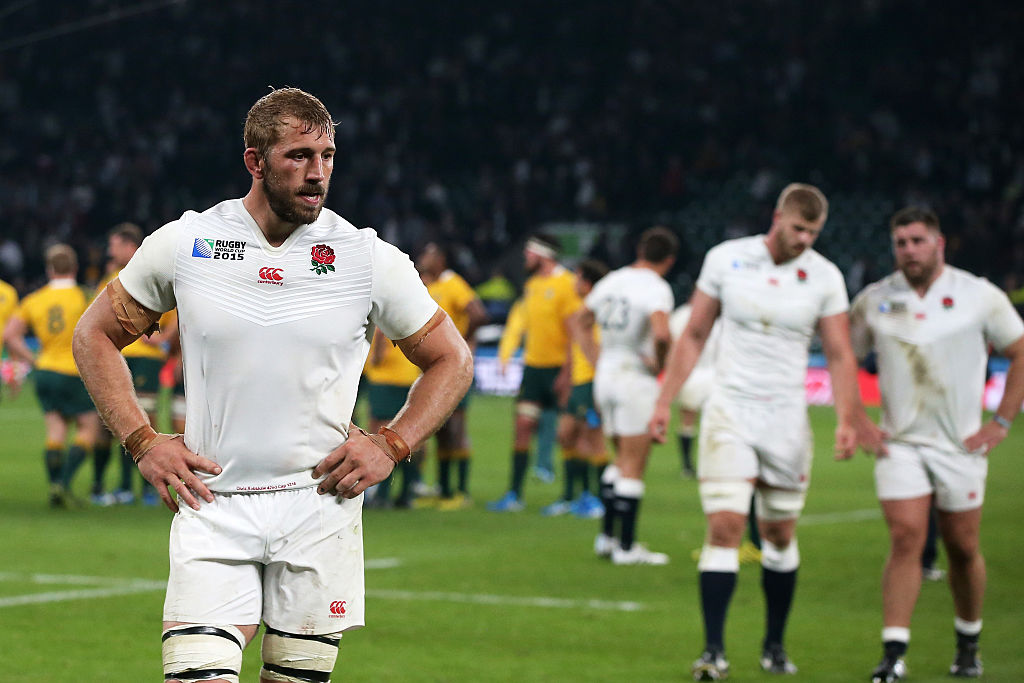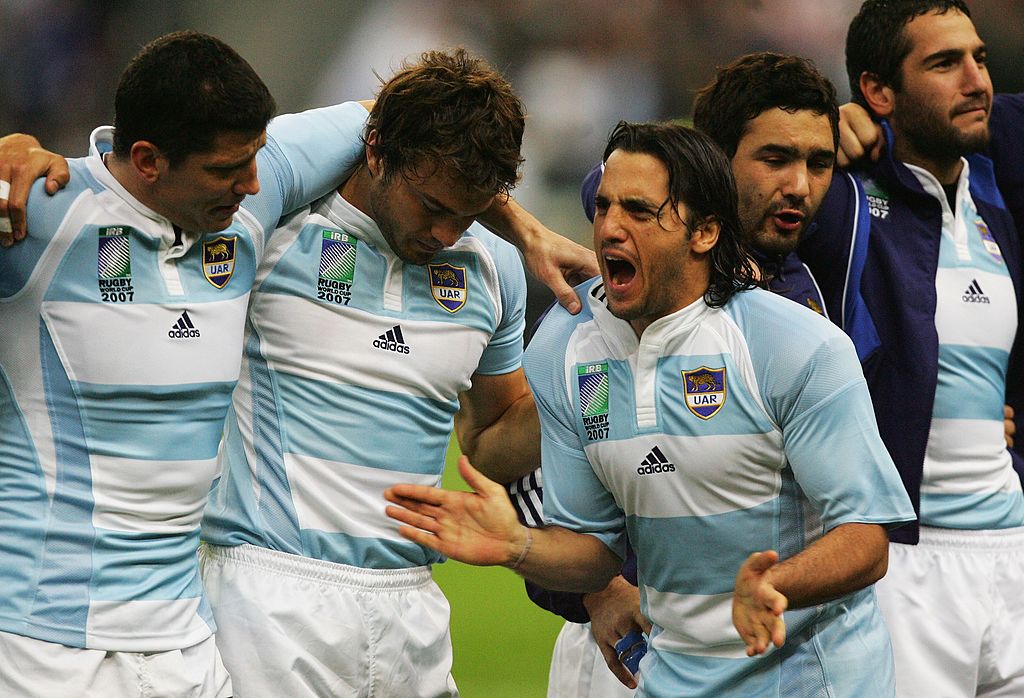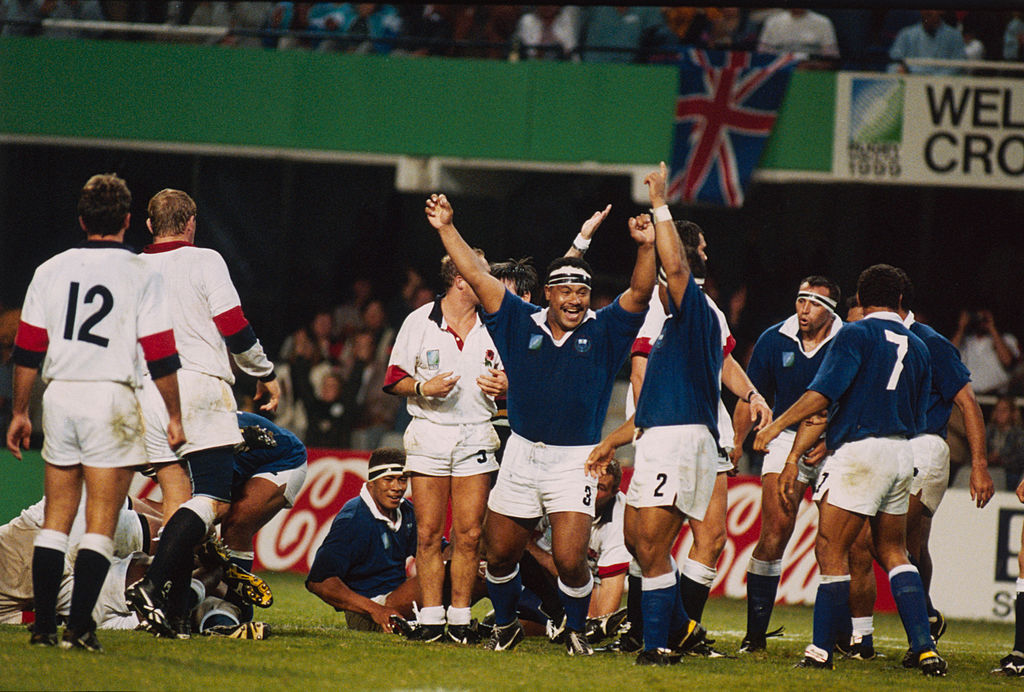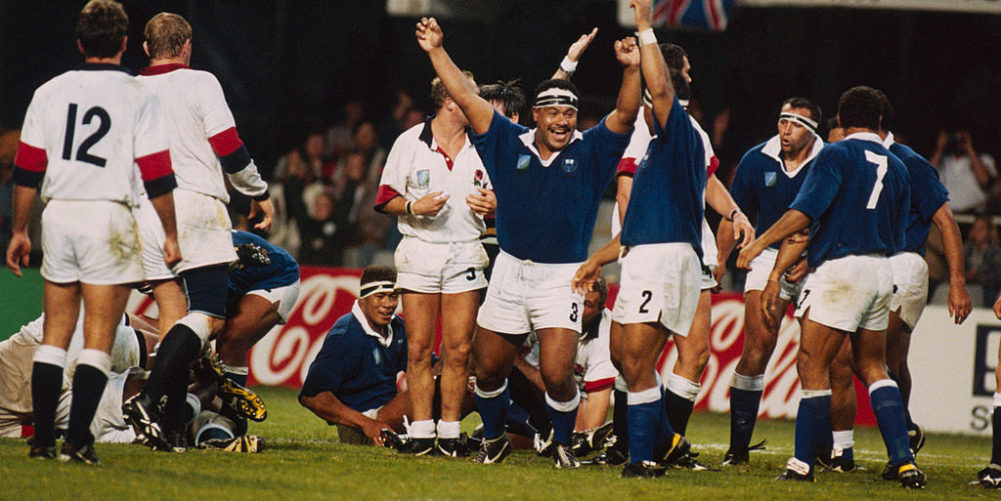One of the leading debates ahead of this year's Rugby World Cup is the extent to which the two halves of the draw are unbalanced in terms of quality teams.
Executive director of the tournament, Michel Possau, defended the nature of the draw on Friday, saying it was: “a consequence of rugby being so tight in terms of rankings and the levels of the various teams.”
But the reality remains that the world's top five teams are all on one side of the draw, and three won't make it beyond the quarter-final.
It is not the first time the draw has appeared unbalanced at the tournament approaches though, and here The Rugby Paper Online looks at three other instances where the World Cup draw hasn't quite lived up to the fairness seedings are supposed to bring.
2015 – Pool A vs The rest of the tournament
These days, people are better able to appreciate that an eye for an eye is not necessarily the best moral code to live by, but you could forgive English, Welsh and Australian fans for not feeling too sympathetic to their fellow contenders after the draw they received eight years ago.
Heading into their World Cup showdown, the three nations were ranked second to fourth in the World Rankings, with England having shown consistent, if unspectacular form in the previous four years, Wales having enjoyed tremendous success in the early part of the cycle and seeming to peak again as the tournament approached, and Australia winning the 2015 Rugby Championship after a revival led by Michael Cheika.

Everyone knows the rest, England were punished for selecting a team that lacked ambition and were deservedly beaten against an injury-ravaged Wales, before suffering a humiliating exit as they were hammered by an excellent Wallabies team.
Though England only had themselves to blame from a rugby point of view for such an early exit, compared with the other three groups they had a right to feel aggrieved at the lack of balance in the tournament.
South Africa were able to progress from Pool B despite losing to the second-lowest ranked side in their pool, Japan, New Zealand and Argentina had no-one else in the Top 10 for company in their pool while Ireland and France benefitted from the same situation, and both of the latter pair were outplayed in their quarter-finals.
The fact that Fiji, ranked ninth at the time, were also in Pool A only served to show how preposterously early the draw was, a mistake World Rugby seemingly hasn't learned from.
2007 – Pool A and Pool D vs Pool B and Pool C
This particular draw was by no means as farcical as this year's upcoming tournament. Although there were, once again, two “easy” groups and two “harder” groups, the fact they would be kept apart at the quarter-final stage made things much fairer, and ultimately it was the four sides that progressed from the two toughest groups that made it into the semis.
Pool B and C were headed by world number two Australia and world number one New Zealand, but the strongest sides they had for company were the two teams that had finished bottom and second bottom in that year's Six Nations, Wales and Scotland respectively.
In contrast, hosts France had world number five and six Ireland and Argentina in their pool, while South Africa had reigning champions England and no opposition outside the top 15 in the world in theirs.

In their four pool games, New Zealand scored 309 points and conceded just 35, beating main rivals for the pool Scotland 40-0 in Edinburgh, soon after they had put 108 points past Portugal, who were ranked 22nd heading into the tournament.
Ironically, it is New Zealand fans who often feel aggrieved for the draw, making the point that the absence of any difficult pool games left them unprepared for their eventual loss in the quarters to France.
The same could be said for Australia, who breezed past Fiji 55-12 in what proved to be the game that decided who topped their pool (with Wales beaten by Fiji and eliminated), before England's scrum and Jonny Wilkinson's boot sent them packing from the competition at the same stage as the All Blacks.
1995 – Pool B and Pool C vs Pool A and Pool D
In this World Cup, the “harder” and “easy” pools were reversed, and the other difference was that it was far from easy to win the group for those in Pools A and D, but extremely straightforward to progress.
In Pool A, Australia and South Africa both progressed having dispatched Canada and Romania in their pool.
Unquestionably, both those opposition were stronger in relative terms to what they are now, but Canada were beginning to fade from the side that – as our columnist Chris Hewett said on the Rugby Paper Podcast recently – gave New Zealand a “real hurry up” in the tournament four years earlier, while Romania were miles away from the force they had been a decade prior.
In contrast, Pool B was packed with nations on the up. Fresh off their shock win against Wales at the 1991 tournament and a quarter-final appearance, Western Samoa repeated the feat in 1995 to join England in the knockout stages.

The sides that failed to progress were Argentina and Italy, who have both gone on to be flourishing tier one nations. Both sides got within seven points of table-toppers England, who had won a third Five Nations Grand Slam in five campaigns earlier that year.
Though lowly Japan propped up Pool C, the fact that one of Ireland and Wales was set to be eliminated behind New Zealand also seemed unjust, and it was 1994 Five Nations Champions Wales who exited after a one-point defeat to the men in green in the last game of the pool.
In contrast, France and Scotland were safely through by the time they faced off in the last game they played in Pool D, having only had to negotiate Tonga (who they had beaten by an average of 32 points) and Cote D'Ivoire (who the pair saw off with an average winning margin of 62.5 points).
Those imbalances, and the advent of professionalism, saw World Rugby expand the tournament to 20 teams four years later in an effort to have more consistently difficult routes to the quarters, with the current format of four groups of five coming in for the 2003 World Cup.
For exclusive stories and all the detailed rugby news you need, subscribe to The Rugby Paper website, digital edition, or newspaper from as little as 14p a day.



























